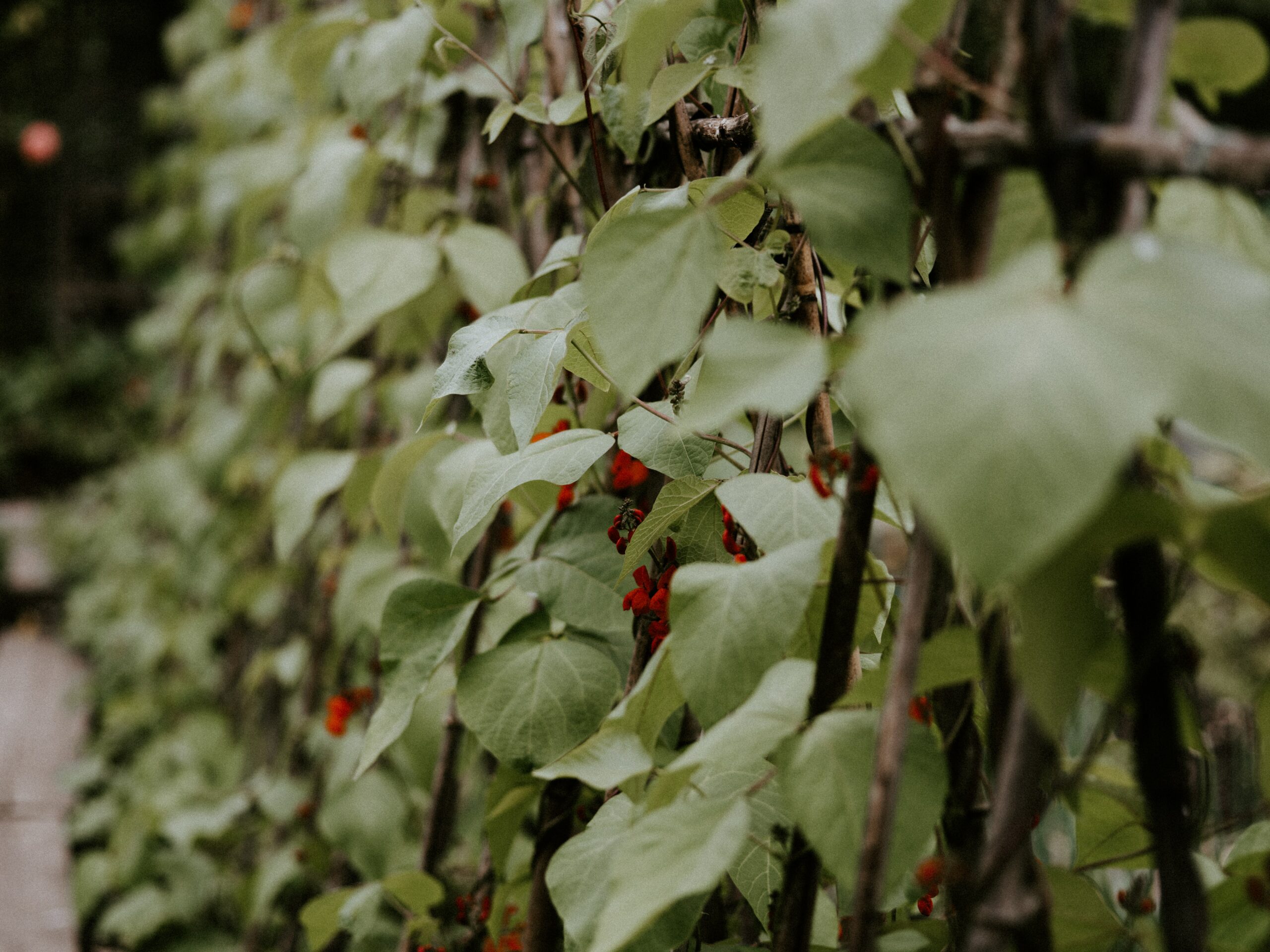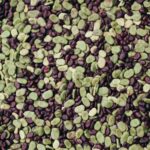Runner beans are a popular vegetable to grow in the home garden. Not only are they delicious and nutritious, but they also have the added benefit of growing quickly and easily. As a botanist specializing in gardening and horticulture, I can confidently say that runner beans are an ideal choice for those who want to cultivate their own produce at home. With just a little knowledge and care, you can enjoy a bumper crop of these tasty legumes! Metaphorically speaking, cultivating runner beans is like watching a plant grow from seedling to full-grown fruit – it’s always fascinating to witness the transformation.
In this article, I will explain how to properly grow and care for runner beans so that you can maximize your harvest while avoiding common pitfalls. From planting tips and tricks to harvesting advice, I’ll provide everything you need to know in order to ensure success with your homegrown runner beans. I will also highlight the many ways that these beans can be used in cooking as well as discuss their nutritional benefits so that you can get creative with your culinary creations!
For anyone interested in growing their own vegetables or simply trying something new in the kitchen, growing and using runner beans is an exciting project that anyone can take on. With just a bit of effort, you’ll soon be reaping the rewards of your hard work!
Planting Runner Beans
Growing runner beans is an exciting and rewarding experience that can be enjoyed by gardeners of all levels. But before you can get started, there are few key considerations to make – starting with the planting process. Where should you plant your runner beans? What soil type should you use? How deep do they need to go?
The answers to these questions are essential for successful growth and harvest, so it’s important to make sure you have them right. When selecting a location for your runner beans, it’s important to look for a place with plenty of sunlight and soil that drains well. The soil should also be rich in organic matter and have a pH level between 6.0 and 6.8 – this will ensure your plants get enough nutrients from the soil. Planting depth is also important – aim for around 6-7 inches deep or about twice as deep as the seed itself – as this will help anchor the plant firmly into the ground and protect it from windy conditions or heavy rains.
Choosing The Right Location
Choosing the right location for your runner beans is like finding a home for a beloved family member. It’s important to consider factors such as sunlight, soil type, and water availability. A good spot will ensure you’ll have luscious beans throughout the season.
When selecting a spot, go for one that gets 6-8 hours of direct sun each day and has well-draining soil. If your garden area is compact, pick an area that receives morning sun, as this will help dry out the soil faster after rains or watering. Also consider whether there are any nearby trees that might shade your planted beans; if so, keep them in mind when selecting a location.
If you have clay or sandy soils, improve them by adding organic matter like aged compost or aged manure to increase fertility and drainage. This will also help retain moisture so you won’t need to water frequently. You may also want to use raised beds if possible; this will help promote better drainage and warmer soil temperatures for earlier harvests of your delicious beans!
Preparing The Soil
Preparing the soil for planting runner beans is like building a house, only instead of bricks and mortar, you’re using the right combination of organic matter, drainage and nutrition. As with any foundation, it’s essential to get the soil preparation right in order to ensure healthy plants and good yields. Here are five key steps to follow:
Start by testing the soil pH. Runner beans prefer slightly acidic to neutral soil (pH 6.0–7.0). If your soil is too alkaline or too acidic, use garden lime or sulfur, respectively, to adjust the pH.
Amend your soil with generous amounts of compost or aged manure before planting; this will improve drainage and provide fertilizer for your beans.
Dig over the planting area thoroughly and remove any stones or weeds that may interfere with plant growth.
Make sure there’s good circulation around the plants by removing low-lying foliage from around plants when they start growing.
Mulch around each plant with straw after planting; this helps retain moisture in dry weather conditions.
By following these simple steps on prepping the soil, you can ensure optimal conditions for your runner bean plants to thrive in! With nourishing soils in place, it’s time to move onto planting and spacing – an equally important step towards having a successful harvest of delicious runner beans!
Planting And Spacing
Once the soil has been successfully prepared, it’s time to think about planting and spacing. In botany and gardening, this is a crucial step in cultivating runner beans and ensuring they receive adequate nutrition and light. Before planting, it is important to consider the variety being sown. Certain varieties are more compact than others, so the spacing should be adjusted accordingly.
When planting runner beans, the seeds should be placed at least one inch deep into the soil and spaced approximately three inches apart in rows that are two feet away from each other. Additionally, if a trellis or support structure is available, then it should be positioned before the seeds are planted to ensure a smooth transition for when they begin to grow vertically.
Once planted, it is essential for gardeners to water regularly and provide ample fertilizer to promote healthy growth. This will help ensure that plants are well-nourished and have enough energy to produce high-yielding crops of delicious beans! With these simple steps in mind, your runner bean plants will soon reach maximum potential!
Watering And Fertilizing
With over 50 varieties of runner beans, it is no surprise that these plants have become a favorite among gardeners. In fact, they are one of the most popular vegetables grown in home gardens. Now that you have planted your runner beans, it is important to understand how to water and fertilize them correctly for optimal growth and production.
When it comes to watering your runner beans, consistency is key. It is best to water your plants deeply once a week rather than lightly every day. As the plants grow taller, you may need to increase the frequency of watering. Make sure that there is good drainage in the area so that the soil does not become waterlogged. Additionally, avoid getting water on the leaves as this can lead to fungal diseases.
Fertilizer is also an important part of caring for runner beans. Apply a balanced fertilizer such as 10-10-10 or 8-8-8 when planting and then again 3 weeks later. For established plants, use a high nitrogen fertilizer like ammonium sulfate or blood meal every 2-3 weeks during the growing season. If you are looking for an organic option, fish emulsion or compost tea are both good choices. Be sure to follow package instructions carefully when applying fertilizer as too much can damage your plants.
By following these tips on watering and fertilizing your runner beans, you will be able to ensure healthy growth and a successful harvest!
Supporting The Vines
Supporting the vines of a runner bean plant is an essential part of its cultivation. Vines can be supported in a variety of ways, such as with stakes, trellis, or other support frames. Staking is the most commonly used method and should be done when the plants reach 8-10 inches tall. To ensure that vines are adequately supported without damaging them, use stakes that are at least 6-8 feet tall and 2 inches in diameter. Attach the vines to the stake with strips of cloth or twine every 6-8 inches – this prevents damage to the stems.
It’s also important to consider how much space you want your runner beans to take up. If you want your plants to grow horizontally instead of vertically, you can attach two stakes at 90 degrees from each other and then attach wires along both stakes. This will provide support for horizontal growth while allowing air circulation and adequate light exposure for healthy plant development.
Regardless of which method you choose for supporting your runner bean vines, it’s important to maintain adequate tension on the ties so that they don’t sag or break under heavy crop weight. Doing this will ensure strong, healthy vines and abundant yields of delicious beans!
Controlling Weeds
Weeding is an important part of growing runner beans. Uncontrolled weeds can crowd out the beans and compete for nutrients, light, and water. To keep weeds under control, it’s important to pull them up from the roots regularly. For large areas that are difficult to weed by hand, you may consider using a light hoe or rototiller to loosen the soil and make it easier to remove the weeds. Additionally, mulching with organic material such as straw, hay, grass clippings, or wood chips can help block sunlight from reaching the soil surface and prevent weed seeds from germinating.
It’s also possible to use herbicides or chemical weed killers if absolutely necessary; however, these should be used as a last resort since they can damage beneficial insects and pollinators in addition to harming other plants in the garden. Before applying any herbicides, be sure to read all labels very carefully and follow all safety instructions. Applying herbicide at night when temperatures are lower can reduce its volatility and help minimize harm to pollinators.
By implementing regular weeding techniques like hand-pulling or using a hoe as well as adding organic mulch where appropriate you can effectively limit the growth of weeds around your runner bean plants and encourage healthy growth.
Common Diseases And Pests
Runner beans are a popular vegetable to grow in the garden, but they can be affected by certain diseases and pests. An interesting statistic is that runner beans can suffer from over 20 different types of virus and fungal diseases, making them more susceptible than some other crops.
The most common problems with runner beans include downy mildew, powdery mildew, blight, rust, mosaic virus and bean aphids. These problems can stunt the growth of your runner beans or even kill them if not treated quickly. To avoid these issues, keep an eye out for any signs of discoloration on leaves or stems. Remove any infected parts of the plant and dispose of them away from other plants to prevent further spread.
It’s also important to give your plants plenty of space to allow good air circulation which helps reduce the risk of disease. Keep weeds away from your beds too as they can harbour pests and diseases that can spread easily to your plants. If you spot any pests on your runner beans it’s best to treat them as soon as possible with an appropriate insecticidal spray or choose natural remedies such as ladybirds or nematodes which will eat the pests without harming your crop.
TIP: Monitor your plants regularly for signs of disease and pests throughout their growing season so you can take action quickly if needed!
Harvesting Runner Beans
Harvesting runner beans is a relatively simple process. In fact, the majority of gardeners in England and Wales report that they harvest over 40% of their crop by mid-summer. To do this successfully, you should wait until the pods are at least 3 inches long, and the seeds inside them feel hard when gently pressed. Once these conditions are met, you can pick the pods directly off the plant. It’s important to note that too much harvesting can reduce yields in subsequent years, so make sure to leave some for next season.
When harvesting runner beans, you should use scissors or pruning shears instead of pulling them from the vine. Doing so may damage both the vine and other nearby plants, and it could also cause excessive stress on your bean plants. If possible, it is best to harvest during cooler times of day—early morning or late evening—to ensure maximum freshness and flavor for your runner beans.
It is essential to check each pod for signs of disease or insect damage before harvesting; if found, these should be disposed of immediately to prevent any potential spread. Otherwise, freshly harvested runner beans can be stored uncooked in an airtight container in the refrigerator for up to two weeks. With proper care and storage techniques, you can enjoy delicious runner beans all season long!
Preserving And Storing
Preserving and storing runner beans can be a great way to enjoy this tasty, nutritious vegetable all year round. Take the case of Mrs. Brown, who grows her own runner beans in her backyard garden. Each summer she harvests enough to preserve some for using over winter.
Preserving runner beans is relatively easy and there are several methods available. The most common method is blanching them, which involves quickly boiling the beans in salted water before plunging them into cold water to stop the cooking process. This ensures that they retain their color, flavor, and nutritional value when frozen or canned.
Once preserved, runner beans can be stored for up to a year in the freezer or up to 18 months in cans if kept in a cool, dark place. It’s important to note that once cooked and cooled, runner beans should be eaten within five days of refrigeration or else they will start to lose their flavor and texture. With careful preservation and storage techniques, you can enjoy fresh-tasting runner beans year round!
Eating Runner Beans
They say “you are what you eat” and the same holds true for runner beans. In order to make the most of these nutrient-rich legumes, it is important to understand the proper way to prepare them for consumption. Eating runner beans is an easy and flavorful way to add a healthy dose of vitamins, minerals and fiber into your diet.
When it comes to eating runner beans, there are two main methods of preparation: steaming or boiling. For best results, steaming is preferable as it preserves more flavor and nutrients than boiling. When steaming, be sure not to overcook the beans as they will become mushy and lose their vibrant green color. Once steamed, they can be served simply with a pat of butter or a light vinaigrette dressing. For added flavor, try seasoning with garlic powder, cumin or oregano.
Runner beans also make a wonderful addition to salads or soups. To use in salads, simply dice cooked runner beans into small cubes and combine with other fresh vegetables such as tomatoes, cucumber or bell peppers. For soups, simmer sliced raw runner beans in chicken or vegetable broth until tender before adding other ingredients like potatoes, carrots or onions. With both salads and soups, be sure to finish off with a generous sprinkle of freshly ground black pepper for an extra boost of flavor.
Eating runner beans is an excellent way to enjoy their multitude of health benefits while experiencing all the flavors they have to offer. Whether steamed on their own or incorporated into your favorite dishes, these tasty legumes are always sure to please the palate!
Cooking With Runner Beans
Cooking with runner beans is a great way to enjoy their delicious flavor. Whether you want to make a classic dish or something more creative, these vegetables provide plenty of options. Here are some tips for cooking with runner beans:
• Cook them quickly over high heat to preserve their flavor and texture. • To get the most out of the flavor, use fresh beans instead of frozen. • If you plan on using dried beans, soak them in water overnight before cooking. • To reduce the potential for stringiness, remove the strings from the sides of the pods before cooking. • Add herbs and spices to enhance the flavor and aroma of your dishes.
Runner beans can be used in a variety of dishes that range from soups and stews to stir-fries and salads. When cooked properly, they have a tender texture that pairs well with other ingredients such as garlic, onion, tomatoes, peppers and herbs. They can also be roasted in the oven or grilled on an outdoor barbecue for added flavor. For those seeking more adventurous flavors, consider adding Asian-style seasonings like ginger or sesame oil to give your dish an exotic twist!
As with any vegetable, it’s important to take care when preparing runner beans so that they don’t become mushy or overcooked. By following these simple tips you’ll be able to create delicious meals that highlight this versatile vegetable! With this knowledge in hand, you’re ready to start creating some tasty dishes with runner beans!
Composting Runner Bean Plants
Having a compost bin in your garden is kind of like having a little ecosystem all of its own. The rich, dark humus produced by the composting process provides nutrition for the plants and helps to preserve moisture in the soil—and it’s all thanks to the hard work of those tiny microorganisms! Composting runner bean plants is an excellent way to make sure that your soil remains healthy, and that your beans keep producing.
Composting runner bean plants can be done easily, but there are a few things to keep in mind:
• Prepare Your Bin: Make sure you have a bin or container with plenty of room for air circulation. If you don’t have one already, you can purchase one from any hardware store or gardening center.
• Collect Materials: You’ll need both green materials (such as grass clippings) and brown materials (such as straw or dried leaves). When collecting materials, try to avoid anything that has been treated with chemicals or pesticides.
• Layer It Up: Alternate layers of green and brown materials, making sure that each layer is no more than 8 inches thick.
• Add Nutrients: To speed up the composting process, add a small amount of nitrogen-rich fertilizer every few weeks. This will help to ensure that your compost has enough nutrients for your beans.
• Turning & Moistening: Every few weeks, turn the compost pile over and mix it up with a shovel or pitchfork. This will help aerate the pile and distribute nutrients evenly throughout the heap. Also make sure to keep the pile moist by spraying it down with water whenever necessary.
By following these simple steps, you can create nutrient-rich compost for your runner beans that will help them thrive year after year! With healthy soil full of life-giving nutrients, you’re bound to have an abundant harvest season after season!
Growing Runner Beans In Containers
Growing runner beans in containers is an excellent way to enjoy the delicious, top-heavy fruits of this popular legume. It’s also a great option for gardeners with limited space or those who don’t have access to fertile soil. With the right container size, potting mix, and care, you can successfully cultivate runner beans in your patio or balcony.
Let’s look at what you need to do:
- Preparation:
- Select the right container(s)
- Fill with quality potting mix
- Planting and Care:
- Sow seeds directly into the potting mix
- Water regularly and keep soil moist
As a specialist in botany and gardening, I can assure you that taking some time to properly prepare your containers will be beneficial in ensuring that your plants grow healthy and vigorous. The ideal size for each container should be at least 10 inches (25 cm) deep and wide with adequate drainage holes. Additionally, it’s essential that you use quality potting mix with good fertility levels as well as good water retention capacity. Once the containers are ready, you can plant runner bean seeds directly into them when all danger of frost has passed. Make sure that the soil is kept moist but not soggy by watering regularly – especially during hot days or periods of prolonged dryness in summer. Applying a layer of organic mulch around each plant will help conserve moisture too. With these simple steps, you’ll soon be able to enjoy mouthwatering homegrown harvests of runner beans! By companion planting with other vegetables such as squash or pumpkins, you can maximize your yield from a small space while still providing an attractive display for your patio or balcony.
Companion Planting With Runner Beans
Companion planting with runner beans is a brilliant way to maximize the potential of your garden and make sure your runner beans flourish. It’s an age-old technique that has been used by gardeners for generations, and it can be an immensely rewarding endeavor. Picture a lush and vibrant garden, with different plants growing together in harmony – this is what companion planting can do for you!
When companion planting with runner beans, think about which other plants will benefit from the same conditions as the beans. Certain species of flowers and herbs are ideal for this purpose, as they attract beneficial insects to pollinate the plants. Vegetables such as squash, potatoes, or carrots also make great companions for runner beans. Once you’ve identified which plants will work best together, create a plan of where to place them in your garden.
To ensure successful companion planting with runner beans, remember to keep the soil well-weeded and mulched. This will help provide extra nutrients and will also prevent weeds from competing with your planted vegetables for resources. Additionally, pay attention to how much light each plant needs – some like more sun than others – so you can provide them all with adequate growing conditions. TIP: Planting taller varieties such as pole beans alongside shorter vegetables is an excellent way of making sure each plant gets enough sunlight without having to rearrange anything in the beds!
Frequently Asked Questions
What Are The Best Varieties Of Runner Beans To Grow?
As a gardener, there is nothing more profound and gratifying than the sight of flourishing runner beans. These versatile legumes are easy to grow and produce an abundance of nutritious pods that can be eaten fresh or frozen for later use. But with so many varieties available, it can be difficult to choose which ones are best for your garden.
Here are some tips to help you decide which varieties of runner beans will work best for your needs: • Look for disease-resistant varieties. • Consider how quickly you need the crop to mature. • Choose your favorite pod shape and size, as well as color. • Decide if you want climbing or bush types of bean plants. • Think about whether you want an early season or late season variety.
Growing runner beans is a rewarding experience that comes with its own unique set of challenges. To ensure success, select the right variety for your area and climate conditions; doing so will maximize their productivity while minimizing potential issues like pests and disease. With careful selection plus regular maintenance such as planting in well-drained soil, consistent watering, and regular pruning or staking—you’ll soon have a thriving patch of delicious runner beans in no time!
How Long Does It Take For Runner Bean Plants To Mature?
When it comes to runner bean plants, one of the most important questions to ask is how long does it take for them to mature? Knowing this information can help gardeners know when they should expect a crop. For those looking to start growing runner beans, understanding how long it takes these plants to reach maturity is essential.
Runner beans are an ideal choice for gardeners who want a quick-maturing crop. On average, these plants will reach maturity within 75-90 days from planting. In some cases though, depending on the variety and climate, the plants may take up to 120 days before they are ready for harvest. To ensure a successful harvest and optimal yield, it’s best to plant runner beans as soon as possible in the spring season.
When grown under ideal conditions with plenty of sunlight and water, runner bean plants can produce many pods throughout their growing season. But if any environmental factor is not right or if the appropriate care isn’t taken during their development period, the yields will be reduced substantially. Therefore, it’s important that gardeners monitor their plants carefully throughout the entire season and adjust accordingly in order to maximize their yields.
By understanding how long it takes for runner bean plants to mature and providing them with adequate care throughout their growth period, gardeners can be sure of a bountiful harvest when the time comes!
How Much Space Should Be Left Between Runner Bean Plants?
When it comes to cultivating runner beans, space is an important factor. With the right distance between them, these plants will flourish and bear an abundance of fruit. To ensure their wellbeing, it is essential to understand how much spacing is required between runner bean plants.
When arranging the garden beds for this particular vegetable, the primary aim should be to create a comfortable environment for these plants to thrive in. To achieve this goal, a minimum of 10 inches apart should be left between each plant. This provides enough space for adequate air flow and prevents competition for resources such as sunlight and water. It also allows ample room for growth so that the beans can reach their full potential.
To ensure success with runner bean cultivation, here are 4 key steps:
- Prepare the soil with plenty of organic matter such as compost or manure before planting.
- Plant seeds at least 10 inches apart from one another, ensuring there is enough space for them to spread out.
- Water regularly but avoid getting water on the leaves of the plant which could cause fungal diseases.
- Add a layer of mulch around each plant to help retain moisture and protect against weeds.
By following these simple steps, you can create an environment that is suitable for runner bean plants to mature and produce delicious fruits in no time! With proper planning and dedication, your garden will soon become home to some healthy and vibrant runner beans that will provide you with plenty of nutrition throughout the season!
Is It Possible To Overwinter Runner Bean Plants?
It is possible to overwinter runner bean plants, however there are a few key considerations to bear in mind. Firstly, the type of runner bean you’re trying to overwinter. There are two types of runner beans: bush and climbing varieties. Bush varieties tend to be smaller and more compact, making them better suited for overwintering as they require less space than climbing varieties.
Secondly, the variety of climatic conditions required for successful overwintering of runner beans. Generally speaking, it’s best to grow your runner beans in a climate that doesn’t get too hot during the summer months and isn’t too cold during the winter months. Additionally, plenty of sun is essential for optimal growth and development.
Finally, proper soil preparation should be taken into account when attempting to overwinter your runner beans. The soil should be rich in organic matter with good drainage capabilities; otherwise, the roots may rot due to excessive moisture. Here are some tips for successful overwintering:
- Regularly monitor temperatures and adjust accordingly
- Mulch heavily around the base of plants
- Provide adequate water throughout winter season
- Prune back any dead or damaged foliage at beginning of springtime – Move container plants indoors or to a sheltered area before winter arrives.
What Are Some Common Pests That Attack Runner Beans?
Runner beans have been a constant presence in gardens for centuries, but they can be susceptible to pests. As a gardener, it’s important to know which pests are likely to attack your runner beans so you can take steps to protect your plants.
Anachronistically speaking, these measures will ensure that you don’t suffer the same fate as the famous beanstalk of Jack and the Beanstalk!
Pests such as aphids, slugs and snails, flea beetles, harlequin bugs and wireworms may all attack runner beans. Aphids tend to congregate on leaves and stems, sucking out sap from the plant which can weaken it. Slugs and snails feed on seedlings and young plants, but also leave silver trails of slime on leaves that can attract other pests. Flea beetles cause small holes in leaves while harlequin bugs feast on flower heads. Finally, wireworms tunnel through roots damaging them severely.
As an experienced botanist or gardener it is important to understand how best to identify and manage these common pests. Knowing when they are most active or what signs of damage they cause is key in preventing an infestation from getting out of hand. Regular monitoring of your plants is essential in keeping them healthy and allowing them to thrive for many years to come.
Conclusion
Runner beans are a wonderful addition to any garden. They are easy to grow and require very little maintenance, yet can provide a bounty of delicious beans for many months. With the right varieties and proper care, these plants can grow for years, bringing beauty and nutrition to your garden.
The sight of these vigorous plants in the garden is truly inspiring. The bright green foliage adds an explosion of life to any outdoor space, while the vibrant red flowers attract pollinators like hummingbirds and butterflies. As the long pods swing in the breeze, they offer a reminder that summer has arrived.
Ultimately, it’s not hard to understand why runner beans are such popular additions in gardens all over the world. Not only do they provide fresh produce during the warm months, but they also add vibrant color and texture to landscapes all year round. With some simple preparation and regular care, you too can enjoy this beautiful vegetable in your own backyard!





























